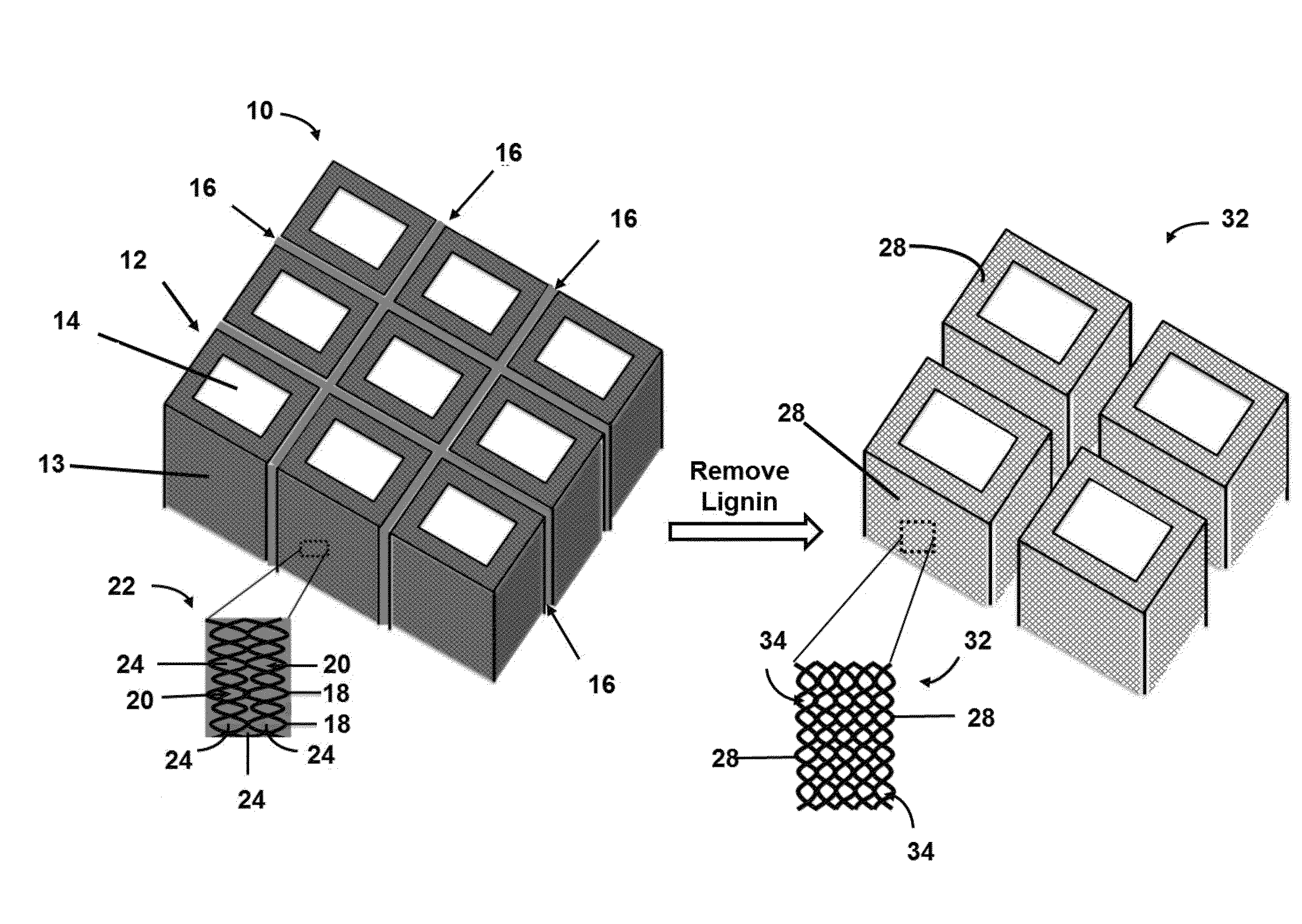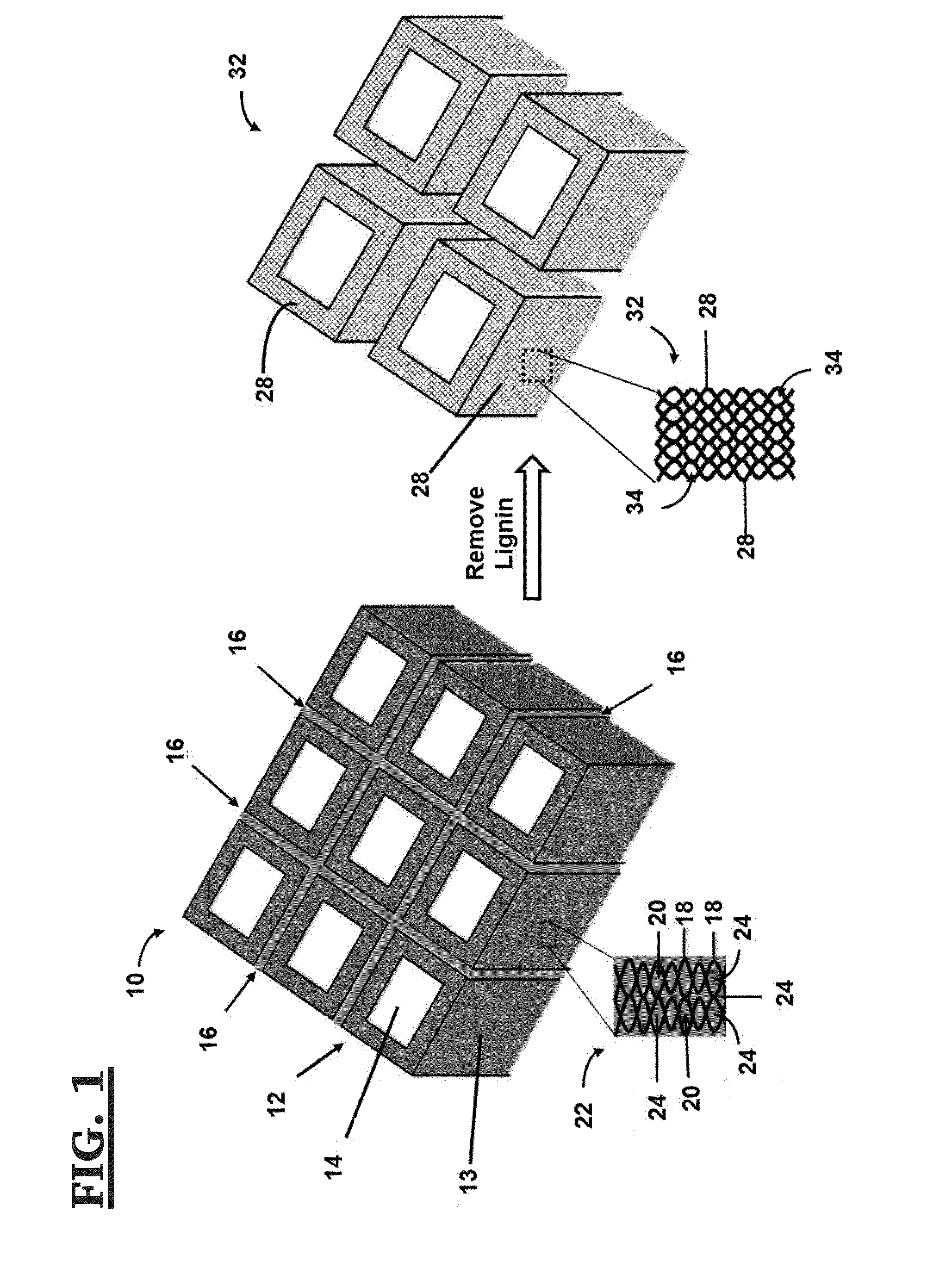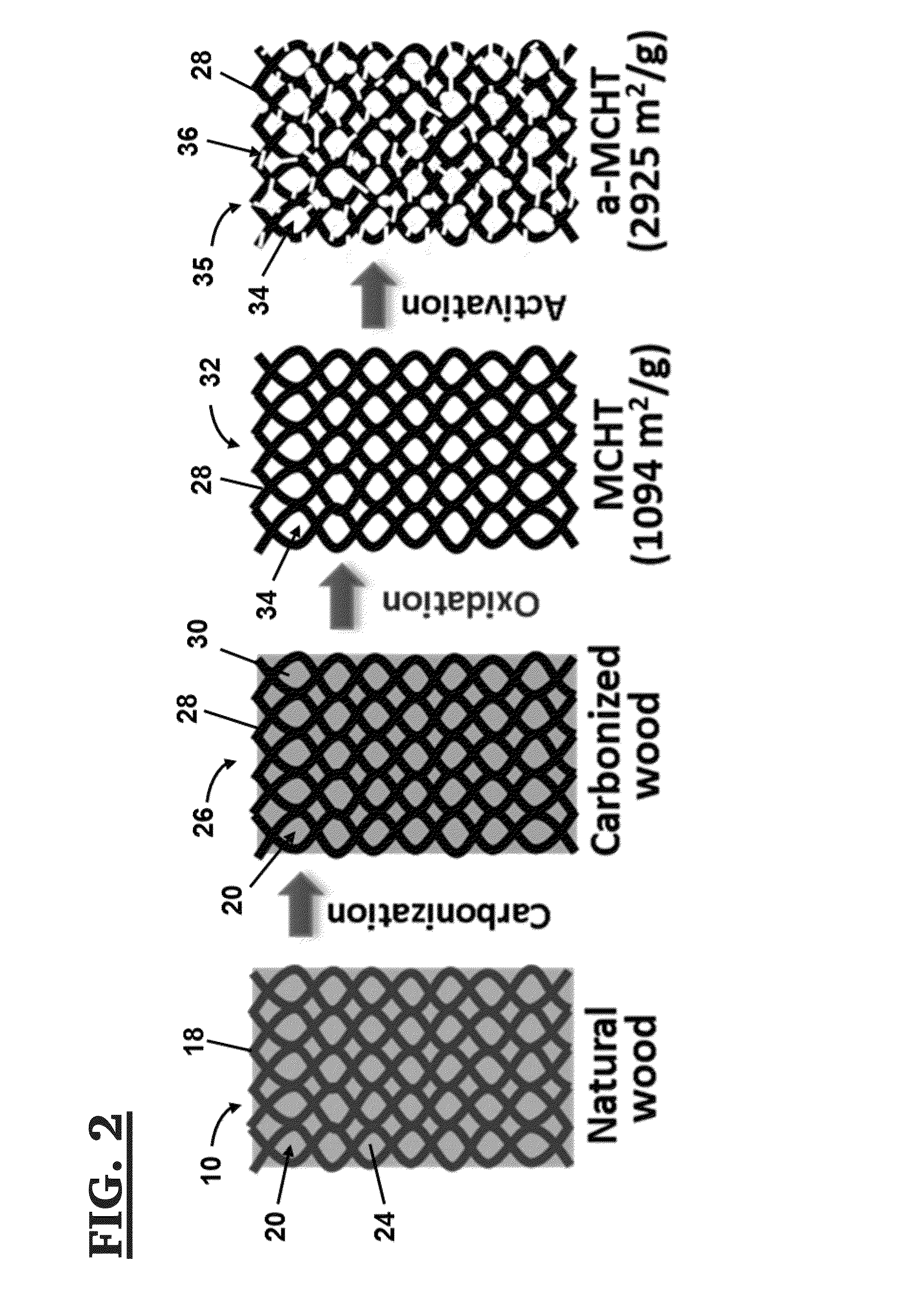Method of making mesoporous carbon from natural wood and mesoporous carbon hollow tubes made thereby
a hollow tube and natural wood technology, applied in the field of porous carbon, can solve the problems of inability to scale up production, time-consuming hard-templating method, inability to remove inorganic template by employing unavoidable drawbacks such as the necessity to employ hazardous chemicals such as hf and naoh, etc., to achieve high adsorption capacity, low cost, and high surface area
- Summary
- Abstract
- Description
- Claims
- Application Information
AI Technical Summary
Benefits of technology
Problems solved by technology
Method used
Image
Examples
example 1
Materials
[0085]Wood sample was collected from SPF lumber (Spruce, Pine, Fir). Potassium hydroxide (KOH) pellet was purchased from EMD chemicals. Methylene blue (MB) and methyl orange (MO) were purchased from Fisher Scientific. N,N-dimethylformamide (DMF) and polyvinylidene fluoride (PVDF) were purchased from Sigma Aldrich. All chemicals were used as-received without further treatment.
Characterization
[0086]Thermal stability of raw wood and c-wood was studied by thermogravimetric analysis (TGA, TA instrument Q500) in air atmosphere from 20° C. to 800° C. with a ramp rate of 10° C. min-1. The morphology of c-wood, MCHT and a-MCHT were characterized by scanning electron microscopy (SEM, JEOL-7401). Transmission electron microscopy (TEM) images of MCHT and a-MCHT were obtained by JEOL JEM-1230 microscope operated at 120 kV. Samples for TEM observation were prepared by drying a drop of sample powder ethanol suspension on carbon-coated copper TEM grids. X-ray photoelectron spectroscopy (XP...
example 2
[0099]Wood sample was collected from SPF (spruce-pine-fir) lumber. The composition is examined as 41.5% of cellulose, 24.7% hemicellulose, and 33.8% of lignin. SPF was cut into 3 x 3×10 mm small pieces and carbonized at 800° C. (heating rate: 5° C. min-1) in nitrogen atmosphere for 2 h, and the product was named C-800. By applying a thermal oxidation process on C-800, carbon materials with different porous structures can be produced. Oxidation temperature and time are the two major factors those affect the final pore structure in oxidized carbon. The oxidation temperature is carefully selected within the range of 270-370° C. because material properties will not experience noticeable change when oxidized below 250° C. and white ashes will be observed due to overheating beyond 370° C. With 5 h thermal heating in air, different porous carbon materials can be produced and named MC-T (T=270, 300, 330, 340, 350, 360, and 370° C.). To study the oxidation time effect, C...
PUM
 Login to View More
Login to View More Abstract
Description
Claims
Application Information
 Login to View More
Login to View More - R&D
- Intellectual Property
- Life Sciences
- Materials
- Tech Scout
- Unparalleled Data Quality
- Higher Quality Content
- 60% Fewer Hallucinations
Browse by: Latest US Patents, China's latest patents, Technical Efficacy Thesaurus, Application Domain, Technology Topic, Popular Technical Reports.
© 2025 PatSnap. All rights reserved.Legal|Privacy policy|Modern Slavery Act Transparency Statement|Sitemap|About US| Contact US: help@patsnap.com



